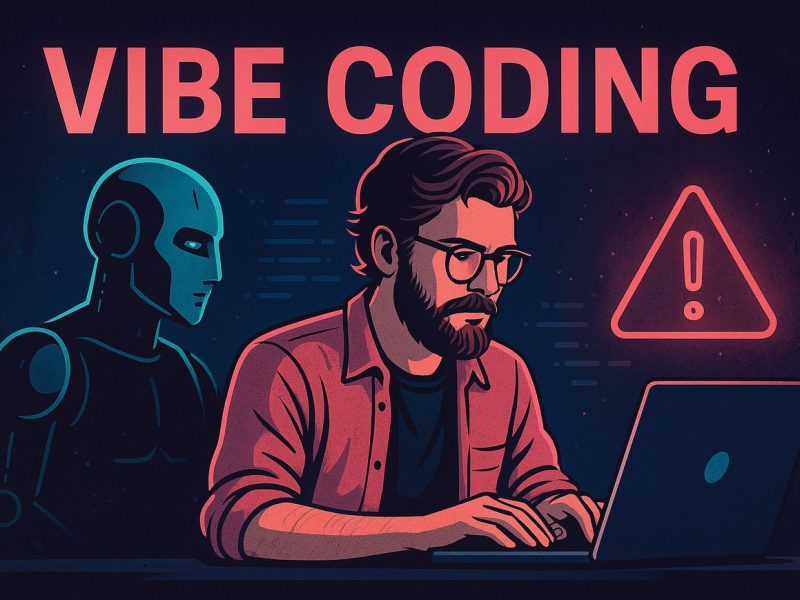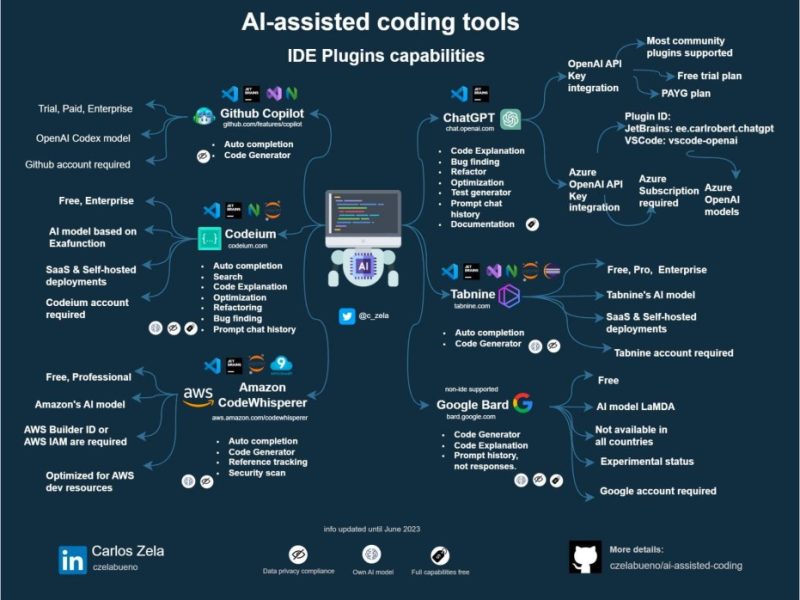The Architect’s Blueprint for AI-Driven Development
The Paradigm Shift: From Keyboards to Conversations
Vibe coding represents the most significant evolution in software development since Agile methodologies. As Andrej Karpathy famously described, this approach involves “forgetting that code even exists” – instead directing AI agents through natural language to build functional systems.
But this isn’t magic; it’s strategic material disengagement, where developers transition from writing code to orchestrating AI collaborators.
After 20+ years architecting enterprise systems, I’ve witnessed how this transforms development:
Precision over keystrokes: Your value shifts from syntax mastery to visionary articulation
Architectural oversight: You remain system designer while AI handles implementation patterns
Exponential iteration: Prototype cycles shrink from weeks to hours while maintaining production readiness
“Think of it as pairing with an extremely productive new hire who’s very smart but has a tendency to go off the rails” – Pete Hodgson
Core Principles of Professional-Grade Vibe Coding
1. Strategic Planning Before Prompting
Ambiguous direction remains the #1 failure point in AI-assisted development. Treat planning like a product discovery session:
Conduct a “Requirements Interview”:
"Act as an expert product manager. Ask clarifying questions about my app idea until we have a solid MVP specification."
(Inspired by Leon Nicholls’ blueprinting technique 1)
Create a Project Constitution: Distill decisions into foundational prompts covering:
Non-negotiables (e.g., “NEVER commit API keys”)
Design principles (e.g., “Prioritize mobile-first interfaces”)
Tech stack constraints (e.g., “Use date-fns for datetime math”)
2. Context-Aware Workflow Design
AI agents suffer from “digital amnesia” without deliberate context management:
File Path Headers: Anchor understanding with
# backend/utils/data_parser.jsin every snippetTask-Isolated Conversations: Dedicate threads to single features to prevent context pollution
Onboarding Documentation: Maintain
CLAUDE.mdorRULES.mddocumenting:### Style Guide - Use Otel spans instead of logging - Single assertions per unit test - Avoid Java-style getters
(As implemented in Claude Code projects)
3. Iterative, Human-Guided Development
Embrace a “chain-of-vibes” approach:
Deconstruct features into atomic tasks (e.g., “Add Stripe checkout” → payment intent endpoint → UI component)
Validate before integration: Test AI-generated code in isolation
Course-correct early: When output misses, respond:
“Pause. List edge cases we haven’t considered for this password flow”
Technical Implementation Framework
The Professional’s Toolchain
| Category | Top Tools | Specialization |
|---|---|---|
| Agentic IDEs | Claude Code, Cursor Pro, Emergent | Full-stack generation from prompts |
| Visual Prototyping | v0.dev, 21st.dev component library | UI generation with exportable prompts |
| Collaboration | Screendragon, Guru | Team coordination & context sharing |
| Security | Snyk AI, Codiga | Vulnerability scanning in CI/CD |
(Tool selection insights from marketer implementation case)
Mobile-Optimized Development Tactics
| Challenge | Solution | Implementation Tip |
|---|---|---|
| Async collaboration | Cloud-based dev envs with shared sessions | Use GitHub Codespaces with Cursor Shared |
| Device-specific testing | AI-generated platform tests | Generate Appium scripts via ChatGPT |
| Performance constraints | Memory-conscious prompting | “Think step-by-step about memory impact” |
Task Decomposition Blueprint
Break projects using this battle-tested pattern:
Data Modeling First:
“Generate PostgreSQL schema for Pomodoro app with Users, Sessions, Settings”
API Contracts:
“Create OpenAPI spec for /start-session endpoint with request/response examples”
Component Isolation:
“Build React TimerComponent using Tailwind. Reference Header.js for style patterns”
Security & Governance Guardrails
Non-Negotiable Protections
Input Validation Enforcement:
if not isinstance(user_id, UUID): raise ValidationError("Invalid ID format")
Secret Management: Automated
.gitignorechecks for credentialsOwnership Verification:
“Add middleware confirming user owns resource ID before DB operations”
Continuous AI Auditing Workflow
Automated Scans: Codiga credential detection
AI-Powered Reviews:
“Act as security expert. Critique this auth code for OWASP Top 10 vulnerabilities”
Permission Layers: Row-Level Security (RLS) in all databases
(Security protocols validated through Hacker News discussions)
Advanced Enterprise Techniques
Performance Optimization
Context Compression: Leverage Claude 3.5’s 200K token window for whole-project analysis
Error Diagnostics:
“Add logging to isolate cart calculation bug. Compare output to test_case_3.json”
Legacy Modernization:
“Refactor PaymentProcessor into microservices while maintaining existing API signatures”
Team Scaling Patterns
Prompt Templates: Standardize requests:
## Feature Request ### Goal: ### Relevant Files: ### Constraints:
Centralized Knowledge: Catalog patterns with Dify.ai
Version Control Protocols: Atomic commits per AI task with descriptive messages
The Future of Augmented Development
Teams adopting these principles consistently achieve:
48-65% faster prototyping cycles
90% reduction in boilerplate coding time
Higher-quality outputs through AI review layers
As arXiv research confirms: “Vibe coding follows iterative goal satisfaction cycles where developers alternate between prompting AI, evaluating generated code, and manual editing. Debugging remains a hybrid process combining AI assistance with manual practices”.
The paradigm isn’t replacing developers—it’s elevating us to solution orchestrators. As one developer’s analysis concluded:
“The most successful outcomes occur from dynamic, well-managed collaboration… Treat AI as a junior collaborator, and you’ll find the vibe more productive than chaotic”.
Recommended Resources:
The future belongs to those who direct intelligently, not just code frantically.


